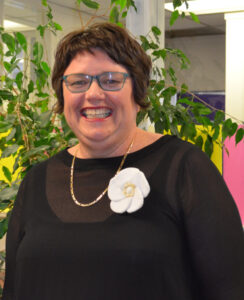Despite workplace violence being recognised as a widespread problem by the International Council of Nurses (ICN) and considered an area for urgent action by the World Health Organization (WHO), it continues to be overlooked as an inevitable part of nursing.1,2
Last December, the NZNO project to Address Violence and Aggression against Nurses (AVAN) requested data (under the Official Information Act) from the 20 district health boards (DHBs), relating to the amount of violent incidents nurses, midwives and health care assistants (HCAs) had reported over the past five years.
We started this process to develop a picture of what the largest health staff employer of Aotearoa knew of the workplace violence (WPV) issue and how much support was being provided to the victims.
To “recognize violent incidents and identify risks of violence” is the first preventative measure recommended by the WHO, to address violence and harassment in the health sector.3 Therefore, as an initial step in addressing this growing issue, the DHBs (and their soon-to-be successor Health NZ) need to be able to rapidly and accurately access the details that indicate the level of violence and aggression staff are facing each day.
From the responses we have received to date, the recording of incidents is minimal or unavailable and the figures are not reflective of the Aotearoa nursing experience.

In 2019, the NZNO Employment Survey showed that 31 per cent of members were suffering from multiple physical assaults annually.4 However, from initial findings in three DHBs, the recently provided data suggests only 5 to 8 per cent of their staff had reported a single physical assault in 2019.
As the majority of NZNO members are DHB employees (approximately 35,000), it is plausible to suggest that the DHB data shows a large shortfall between what we understand to be happening and what is being reported.
This data is extremely important. Each of these numbers relates to an individual who has been hurt in the course of their work. These are people who have suffered insults, racial slurs, fractures, bruises, concussions, attempted strangulations, or worse, while simply trying to do their job.
Unfortunately, this data doesn’t provide evidence of the size of the problem and without realistic figures, the need can continue to be ignored. It appears that under-reporting (due to the multitude of issues facing nurses everyday – time and organisational restraints, structural issues, ineffectual reporting systems, etc) continues to complicate this issue.
Our initial findings also suggest that a significant proportion of harm is not reported to ACC and therefore outside of the compensation model.
Our initial findings also suggest that a significant proportion of harm is not reported to ACC and is therefore outside the compensation model. People are not seeking support for the injuries they get. Figures from one DHB show that while 2336 physical assaults were suffered by nurses, midwives, and HCAs (from 2017 to 2021), only 325 incidents “required” an ACC claim in those same five years. This would suggest that nurses are working in a system that is not highlighting the problem to the health insurer, nor is official treatment being sought.

For nurses to receive the support they deserve, ongoing documentation and support for escalation of incidents needs to be accessible and encouraged. Every incident of aggression towards a health professional needs to be documented — verbal abuse, threats, slaps, kicking and pushing. We are aware that many nurses are facing an environment of repetitive verbal and physical assaults. Working in this type of environment long-term can have enduring and complex implications.5 The accumulative effects of violence can be both physical and psychological and yet neither can be treated if they are not first documented.
Unsafe staffing levels and inappropriate environments contribute to health sector WPV, but without oversight of the issue first, the employer can remain ignorant and claim to be uninformed. Reporting systems need to be intuitive and easily accessible. Nurses need a robust response framework for this issue, with escalation pathways that are encouraged. Health professionals must have their safety prioritised and WorkSafe needs to start investigating the health sector for breaches of the Health & Safety at Work Act.
The AVAN working group welcomes your feedback on this issue as we continue to develop a rautaki/strategy, in accordance with the member reference group directives, to address the many shortfalls leading to the inexcusable continuation of violence and aggression in nursing.
Dana Hudson works as project support for AVAN, and Suzanne Rolls is an NZNO professional nursing advisor.
References
- International Council of Nurses. (2009). Position Statement: Prevention and Management of Workplace Violence.
- World Health Organization. (2020). Charter — Health Worker Safety: a priority for patient safety.
- World Health Organization. (2022). Occupational hazards in the heath sector: Violence and harassment – preventive measures.
- Willis, J. (2020). NZNO Employment Survey 2019 Research Advisory Paper – Violence and Aggression against Nurses.
- Gerberich, S. G., Church, T. R., McGovern, P. M., Hansen, H. E., Nachreiner, N. M., Geisser, M. S., & Watt, G. D. (2004). An epidemiological study of the magnitude and consequences of work-related violence: the Minnesota Nurses’ Study. Occupational and Environmental Medicine, 61(6), 495-503.


